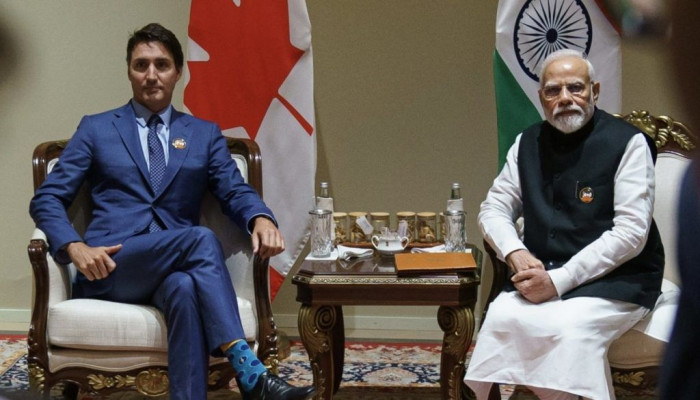They need to develop agility, resilience and flexibility to cater to diverse educational needs of the student community and other stakeholders and to remain frontrunners in quality education
In the wake of the COVID-19 outbreak and the resultant lockdowns, the entire education sector collapsed across the globe. The future was uncertain for all, particularly for Higher Educational Institutions (HEIs), as there was lack of preparedness among educators, students, academic administrators and policy makers alike. Are the students going to lose a year was the question bothering most educationists, parents and the scholars themselves. To respond to the unprecedented situation, the entire sector needed to unlearn and relearn its pedagogy. Hence, the HEIs were forced to explore new teaching methodologies, including remote and online education.
This was a major challenge given the fact that the Indian higher education sector engages approximately 14.16 lakh teachers in 51,649 institutions, both public and private, and caters to almost 3.74 crore students. Each year, about 91 lakh students pass out from colleges and universities across the country. Therefore, the lockdown posed a tremendous challenge for the HEIs as they had to deal with students’ emotional, physical and financial difficulties on one side and grapple with decreasing enrolment numbers, funding problems and the training of faculties to cope with the new online teaching methods and so on, on the other side.
Given the socio-economic challenges thrown up by the pandemic, if this uncertainty continues for one more quarter, it will result in short and long-term consequences for the entire education sector. HEIs with strong brand values, a good academic leadership and governance, better stakeholder engagement and Information and Communications Technology (ICT) infrastructure did well during these tough times as they could overcome the challenges posed by the lockdown by shifting to remote teaching-learning. By using online platforms and ICT technologies, they ensured that there was no academic loss to students.
Many private institutions and universities are looking forward to an enriched intellectual opportunity from this crisis and are prepared to address any adversity. However, at the same time there are some State-funded HEIs and a few private participants who are still facing difficulties in ensuring delivery and learning outcomes for their students.
Academicians and STEM (science, technology, engineering, and mathematics) students are worried about missing out practical and critical problem-solving skills. Even though instructors are being trained by most HEIs to develop high-tech ways of simulating field and laboratory experiences, for many institutions, it is not possible to do so due to geographical disadvantages and financial barriers.
Though Government educational portals are providing support and universities are coming up with models to address such issues, the digital divide, economic inequality, inclusiveness and non-affordability are some issues that need to be addressed on a war footing.
Another major challenge that all HEIs faced was to assess the mental health of final year students who graduated in this academic year. They were not sure whether they would get suitable job offers commensurate with their qualifications. This problem is compounded by the fact that most of the companies have withdrawn placement offers due to the struggling economy.
Plus, another trend impacting HEIs is the preference of students to attend institutions, colleges and universities on the criteria of location. They are not going by the repute of HEIs and are more keen to avoid Covid-19 hotspots. Plus, because of the job losses and salary cuts faced by their families, students are opting for HEIs that don’t charge too much fee. This decentralisation of HEIs and preference for local institutions will increase in future as parents will prefer to settle for lesser-known local institutions with the hope that they would switch over to another better-known/branded institution for award of degree under the Academic Credit Bank and Credit Transfer Provision of the National Education Policy 2020.
The enrolment depression has also increased due to remote learning as many students changed their minds and decided to defer their higher education plans for this academic year. The most common reasons include doubts about the quality of remote teaching, lack of rich on-campus experience and the costs, which are being perceived as too high for an online experience.
Due to the economic difficulties faced by their parents, a vast majority of students expected tuition fee discounts, but as that did not materialise, it ultimately led to lower enrolments in the current academic session in many of the HEIs. The enrolment has also been affected due to shifting of academic calendars of institutions, which is providing less time to first-time students of higher education for understanding academic philosophy, culture, systems and processes, resulting in loss of learning opportunities.
During the pandemic, the HEIs faced many challenges of student support remotely. They struggled to fulfill the educational requirement of students through effective and remote teaching-learning and assessment practices; improve teaching practices at the university level in the context of the development and integration of digital technologies; nurture and enable the development of learners as active and responsible citizens, critical thinkers, problem solvers, equipped for life-long learning.
They also faced challenges of enabling online internships, project works and placements; encouraging and promoting scholarly activities of students and faculty members; effective engagement of students, faculty and staff members.
Internationalisation of studies was another problem as worldwide travel was closed due to the pandemic. Generating revenues/funds, maintaining cash flows for sustainable development and meeting the regular expenditure was another area of concern. The degree of impact of the challenges naturally varied for public-funded HEIs and private-funded ones.
Due to the severe downturn, the Government announced several stimulus packages to boost the economy. Though the Government is making every effort to provide all necessary assistance, it needs to work quickly for the holistic development of education to create a resurgent India. It is imperative that the Government brings out a comprehensive National Education Policy 2020 on a blended mode of education. The sooner its implementation happens, the better for all the stakeholders of higher education.
In times of crisis, apart from the initiatives of the Government, steps should be taken at the institutional level as well. Institutions are required to provide emotional and health support to their stakeholders so that they do not face any depression or distress. The stakeholders in turn should guide students and boost their morale. Stakeholders should keep in constant touch with their students and motivate them to opt for self-employment, provide information about various start-up schemes implemented by State Governments and the Centre.
The Association of Indian Universities (AIU) has undertaken a great initiative to produce a “COVID-19 Response Tool Kit” for Indian HEIs, which has been developed to help build institutional resilience for academic planning and continuity. This can be used as a reference document and checklist by education institutions to enable a more effective and planned reopening and to ensure that critical institutional aspects are addressed and necessary measures are considered to maintain academic continuity.
Every challenge throws up a new opportunity. Higher education has many possibilities and challenges, too, during this COVID era. While each level of education faces its unique challenges, it is the higher education segment that may end up, by necessity, triggering a learning revolution. The Covid-19 pandemic has changed the education system forever. It has set a “new normal.”
The HEIs and their faculty need to think differently and embrace ICT for all operations starting from admissions, teaching-learning, assessment, curriculum and E-content, E-resources (virtual labs and learning resources), industry interaction, internationalisation, student interaction and support, student progression and support, alumni engagement, communication and governance.
Therefore, HEIs need to develop agility, resilience and flexibility to cater to diverse educational needs of the student community and other stakeholders and to remain frontrunners in quality higher education.
(The writer is Vice-Chancellor Professor, Entrepreneurship, Leadership and IT, Amity University)








 OpinionExpress.In
OpinionExpress.In















Comments (0)